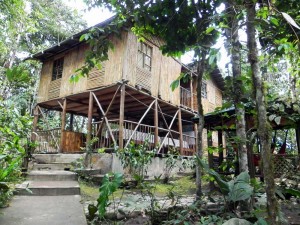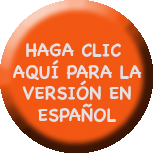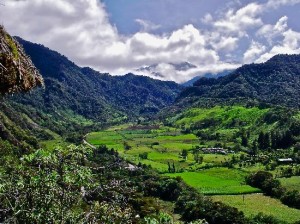Intag is a remote, mountainous region in the Andes in the Imbabura province, northern Ecuador. The area is part of two of the world’s most important Biological Hotspots: the Tropical Andes and the Tumbes-Chocó–Magdalena Hotspot (For more details about the great biological importance of this region see: http://www.conservation.org/where/priority_areas/hotspots/south_america/Tropical-Andes/Pages/default.aspx
Approximately 17,000 people live in Intag in communities that are sparsely scattered among cloud forest and agricultural lands. Most live from small scale agriculture and farm the surrounding land. Because of the area’s great altitudinal range, they are able to grow an impressive number of agricultural products, including: tropical fruits, coffee, cacao, corn, beans , potatoes, tree tomatoes, sugar cane, bananas and naranjillas, in addition to raising cows, pigs, chickens and guinea pigs.
Intag borders the Cotacatchi Cayapas Ecological Reserve, internationally recognized for its ecological importance. From Intag’s communities you can see the rim of the reserve. Beyond the ridge line, thick cloud forest descends into tropical forest to Ecuador’s coast.
The region’s agriculture is mostly self sufficient, though an important part also goes to outside markets like Otavalo and Ibarra. Intag’s agriculture is also emerging into export markets. For example, surplus milk is collected each day and transported to Quito. The milk is considered to be of high quality because of Intag’s clean environment.

Lodge in Junin’s pristine cloud forests, built in 2001 to promote ecotourism as an alternative to mining.
Intag also produces fairtrade shade-grown coffee which is sold within Ecuador and also exported overseas. Residents also hand-weave crafts such as bags, wallets and belts from the fibers of the cabuya plant for sale locally and in Otavalo, as well as being exported to Japan and the U.S. A women’s group in Rosal produces hand made soaps and shampoos, and there is also a project underway to build small hydroelectric dams in the region, to use Intag’s rivers to generate electricity. Also, eco-tourism is developing into an important driver of the economy in the area. The residents of Junin have built a lodge that allows tourists the enjoy the tropical cloud forest. These very forests are targeted for mining.
These are just some of the alternatives that have grown out of 18 years of mining resistance, and which have put Intag on the map as an example of positive local response to mining pressures. In the early 1990s a Japanese mining corporation, Bishimetals, began explorations in Intag. They inferred the presence of 2.26 million tons of pure copper in the region. A deposit this size would take 10 to 20 years to exploit. In 2011 the world consumed 22 million tons of copper. The amount of copper in Intag is not certain since community opposition forced the company to withdraw before they could confirm the deposit. Local communities vehemently oppose a mine in their territories.
In one of the responses to the threat of mining, in 1997, the people of Cotacachi County (of which Intag is a part of) declared Cotacatchi an ‘ecological county, demonstrating the level of opposition. In 2000, the people’s wishes became a local law when the Municipal government legally created an Ordinance creating the first Ecological County in Latin America.
In 2008, Copper Mesa, a Canadian mining company was expelled from Intag (see decoin.org for details)

Intag residents protest Canadian mining corporation Ascendant Copper. The compay left Intag in 2007 after violent confrontations between locals and paramilitaries.
Yet in 2012, without consulting local communities, the Chilean and Ecuadorean governments signed a contract reopen Intag’s Junin mining project, starting as early as the second semester of 2013. The project is set to be undertaken by the Chilean owned Codelco, the world’s larges copper producer, and the Ecuadorian state-owned mining company, ENAMI. Once again, the stage is set for the conflict in Intag to escalate.
Sources:
- Mining conflicts around the world
http://www.ejolt.org/2012/11/mining-conflicts-around-the-world-common-grounds-from-an-environmental-justice-perspective/ - An ecological study of Ecuador’s Intag region
http://www.eartheconomics.org/FileLibrary/file/Reports/Final%20Intag%20Report_lo_res.pdf - www.decoin.org

